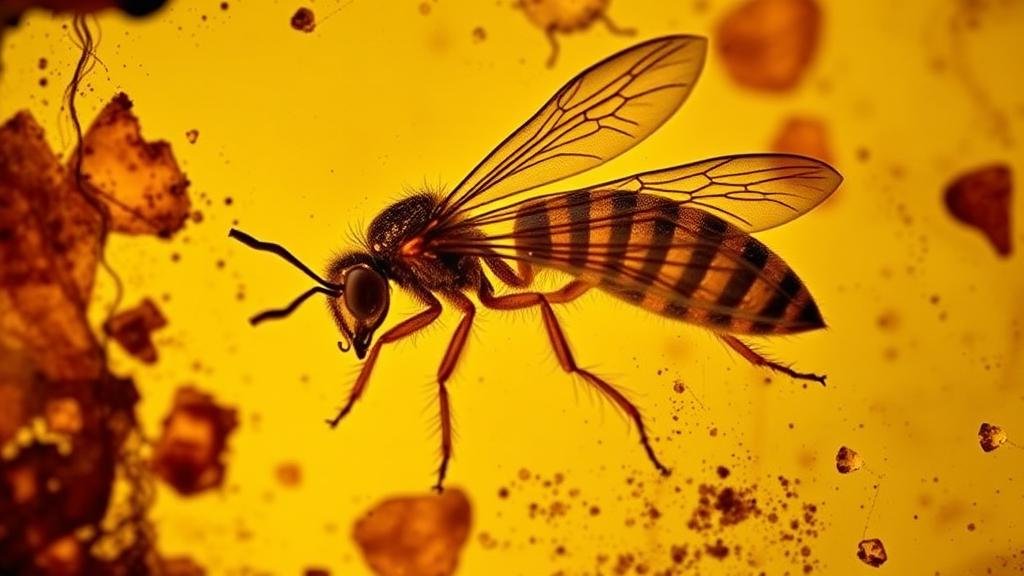Searching for unique fossilized insect specimens trapped in Dominican amber.
Searching for Unique Fossilized Insect Specimens Trapped in Dominican Amber
For rockhounds and mineral collectors, the allure of fossilized specimens lies not just in their aesthetic beauty but also in their scientific significance. Dominican amber, a type of fossilized tree resin, is renowned for preserving a rich array of ancient life forms, especially insects. This article explores the fascinating world of Dominican amber hunting, detailing what to look for, the history behind this geological treasure, and practical tips for collectors.
The Origins and Formation of Dominican Amber
Dominican amber is primarily derived from the resin of the extinct tree species Hymenaea protera. This tree flourished approximately 20 to 30 million years ago during the Miocene Epoch. As the resin seeped from the tree and became buried under sediment, it underwent a polymerization process that transformed it into the hard, transparent amber we see today. This ancient resin is famous for encasing insects, spiders, and small plant material that offers a snapshot of prehistoric ecosystems.
Scientific Significance of Fossilized Insects
The insects trapped in Dominican amber provide critical information regarding biodiversity and environmental conditions of the past. Researchers have identified over 2,000 insect species preserved in amber, which helps to illustrate the evolutionary processes occurring millions of years ago. For example, studies have shown that some trapped insects, such as bees and ants, are direct ancestors of today’s species.
One remarkable example is Dominican amber containing Hymenaea protera specimens, which exhibit a remarkable level of detail, such as wing patterns and body structure. These findings help paleontologists trace the changes in species over millions of years, providing insights into adaptation and survival.
How to Collect Dominican Amber
Embarking on a quest to find Dominican amber requires specific knowledge and techniques to increase your chances of success. Here are some essential tips for collectors:
- Research Locations: The best-known locations for Dominican amber are in the Cibao Valley, specifically areas like the town of Santiago and the surrounding mountains. Participating in guided tours can also enhance your findings.
- Field Techniques: Look for amber-colored pieces embedded in clay or dirt. Use tools like a small shovel or trowel to excavate these areas carefully. You may also use a specialized UV light to distinguish amber from similar-looking materials.
- Field Identification: Examine pieces under varying light conditions. Genuine amber will often fluoresce under UV light and feel warm to the touch. In contrast, plastic will feel noticeably cooler.
Evaluating the Quality of Amber Specimens
Once you have collected potential amber specimens, it is crucial to evaluate their quality. Factors influencing the collectors value include:
- Clarity: Clear amber is typically more desirable than cloudy or opaque pieces, as inclusions are more visible.
- Inclusions: Specimens containing well-preserved fossils, especially rare insects or multi-species inclusions, significantly increase the value of the amber.
- Color: While classic yellow is common, rare colors such as blue, green, and red command higher prices.
Real-World Applications and Conservation
Paleontological research relying on Dominican amber contributes to conservation efforts by providing context for biodiversity changes. Analyzing the ecological niches of ancient insects can inform current conservation strategies for endangered species. Plus, collectors and researchers emphasize sustainable practices, advocating against over-exploitation and illegal mining of amber.
Actionable Takeaways for Collectors
Rockhounds and mineral collectors looking for unique fossilized insect specimens trapped in Dominican amber should:
- Engage in thorough research about responsible collecting spots and the geological history of the area.
- Use field methods and identification techniques for maximizing amber discovery.
- Consider the scientific and ecological importance of their finds, promoting responsible and sustainable collecting practices.
The search for Dominican amber can be an exhilarating adventure, rich with the potential for scientific discovery and personal satisfaction. Whether you are an amateur enthusiast or a seasoned collector, the journey to uncover unique specimens is a rewarding endeavor that connects you to the ancient history of our planet.



